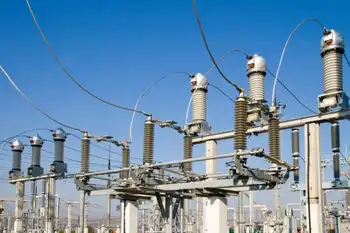California Power Talks Continue
By Meanwhile, moderate weather helped allow the state to reduce its "power alert" status to Stage One, the lowest level, for the first time since a string of 39 consecutive Stage Three alerts issued during the past two months.
Substation Relay Protection Training
Our customized live online or in‑person group training can be delivered to your staff at your location.

- Live Online
- 12 hours Instructor-led
- Group Training Available
LOS ANGELES -- (UPI) -- Representatives of California's three largest utilities and the governor's office met again last Thursday to work out an agreement to sell the high-voltage power transmission lines owned by the companies to the state as part of a multibillion-dollar plan to keep the companies afloat and electricity flowing into California. Gov. Gray Davis and state legislators have seen the acquisition of most of the 32,000-mile grid as the best means of securing a $10 billion bond measure approved earlier this month to enable to the state's Department of Water Resources to enter into long-term contracts with power generating companies on behalf of two of the utilities, Pacific Gas & Electric and Southern California Edison. "We are still hopeful for an announcement," Davis' spokesman, Steve Maviglio, told reporters late Wednesday. Edison, PG&E and, to a lesser extent, San Diego Gas & Electric Co., have been reeling in recent months from mounting debts brought on by wholesale power prices that have soared above the level they are allowed to charge their retail customers. In order to protect ratepayers from a major increase, and the utilities from possible bankruptcy, lawmakers have agreed to use the DWR to buy electricity and then sell it to the utilities at cost. Selling the power lines, which carry electricity to about 75 percent of the state, would provide the companies with the large cash infusion they need -- likely more than $6 billion -- to get their battered credit back on even keel. Published reports, however, have said PG&E remains reluctant to sell the valuable asset. "PG&E comes in with a big huff of arrogance," Garry South, a Davis political advisor, told the Los Angeles Times. "They act like they are in control when they are in serious soup." Davis himself warned Thursday that the state reserved the right to use its power of eminent domain to seize the transmission lines in the event a deal cannot be reached. "My strong preference is to do this through a cooperative negotiation process," Davis told reporters during an appearance at a school near Sacramento. Meanwhile, moderate weather helped allow the state to reduce its "power alert" status to Stage One, the lowest level, for the first time since a string of 39 consecutive Stage Three alerts issued during the past two months.











